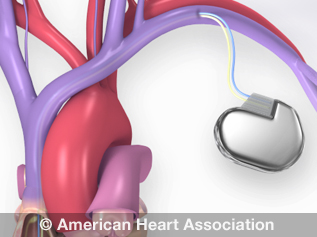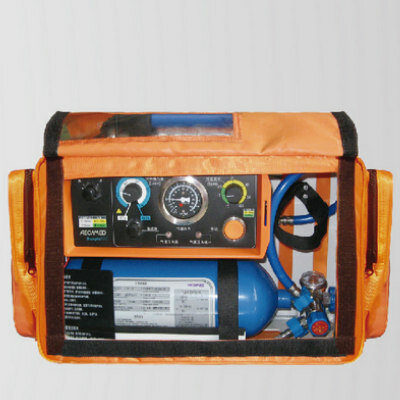Wireless Pacemaker Recharges Battery by Generating Electrical Energy from Heartbeats
|
By HospiMedica International staff writers Posted on 07 Nov 2023 |

Traditional (transvenous) pacemakers have small leads or wires that link to the heart at one end and to a generator (which contains the battery) located just under the skin near the left shoulder at the other end. These leads are fitted with sensors or electrodes that monitor the patient’s heart rhythm and send electrical signals to the heart to regulate its beat when necessary. On the other hand, leadless pacemakers are self-contained units that are tinier than transvenous pacemakers and are positioned entirely within the right ventricle of the heart. They are inserted via a vein in the leg using a thin tube. One limitation of leadless pacemakers is that their batteries cannot be as easily replaced as those in transvenous pacemakers. Batteries in both types of pacemakers typically last between 6 to 15 years. Furthermore, extracting a leadless pacemaker from the heart poses a challenge, which might lead to the need for new pacemakers to be implanted next to the old ones when their batteries deplete. This can be especially problematic for younger patients who may need several pacemaker replacements over their lifetime. To address this issue, a new experimental leadless pacemaker has been designed that can partially recharge its own battery by harnessing the energy from heartbeats.
In a proof-of-principle study, researchers at the University of Washington (Seattle, WA, USA) demonstrated an experimental leadless pacemaker that can regain some of its battery life by transforming the heart's mechanical energy into electrical energy. They developed three prototype devices and evaluated them in a cardiac pressure simulator to assess their voltage output when exposed to oscillating pressures similar to those in the right ventricle. These prototypes are comparable in size to the leadless pacemakers available in the market and are about a third of the size of an AAA battery.
The team then placed the prototype devices in a device designed to mimic the natural pressure of the heart at a rhythm of 60 beats per minute. They measured the energy generated by the devices in response to this artificial heartbeat. The most efficient prototype was able to capture about 10% of the energy needed to regulate the subsequent heartbeat, based on the typical output of a pacemaker. Since this is an initial study of an experimental device, it is not yet known if this technology can be effectively and safely applied in humans over the long term. Nonetheless, the researchers are planning more extensive in-vivo studies. This investigation only focused on the energy for the immediate next heartbeat, but future iterations of the device will seek to improve on the 10% energy harvesting efficiency.
“Our next step is to optimize materials and fabrication to improve energy harvesting efficiency, and then show we can do so consistently in long-term studies. When we can improve upon our 10% harvesting efficiency, we hope to partner with one of the major pacemaker companies to incorporate our design and housing into an existing leadless pacemaker,” said lead study author Babak Nazer, M.D., an associate professor of medicine at the University of Washington. “We hope to prolong battery life further and expand access of this product to younger patients, who would hopefully require fewer implants over their lifetime.”
Related Links:
University of Washington
Latest Critical Care News
- Focused Ultrasound Technique Successfully Treats Pediatric Brain Cancer
- Nasal Drops Fight Brain Tumors Noninvasively
- AI Helps Optimize Therapy Selection and Dosing for Septic Shock
- Glowing Bacteria ‘Pills’ for Detecting Gut Diseases Could Eliminate Colonoscopies
- Skin-Permeable Polymer Patch Delivers Insulin Non-Invasively Through Skin
- Nanogel Technology Almost 100% Effective in Destroying Drug-Resistant Bacteria Within Hours
- Wearable Ultrasound Sensor Delivers Noninvasive Treatment Without Surgery
- Gel-Free ECG System to Transform Heart Health Diagnosis
- Biodegradable Patch Repairs Damaged Tissue After Heart Attack
- Magnetically Guided Microrobots to Enable Targeted Drug Delivery

- Smart Nanomaterials Detect and Treat Traumatic Brain Injuries Simultaneously
- Earlier Blood Transfusion Could Reduce Heart Failure and Arrhythmia in Heart Disease Patients
- 'Smart' Shirt Detects Epileptic Seizures in Real Time
- Skin Patch Measures Effectiveness of Flu/COVID Vaccines in 10 Minutes
- Complete Revascularization Reduces Risk of Death from Cardiovascular Causes
- Tiny Fish-Inspired Robots Navigate Through Body to Deliver Targeted Drug Therapy
Channels
Surgical Techniques
view channelLaparoscopic Surgery Improves Outcomes for Severe Newborn Liver Disease
Biliary atresia is a rare but life-threatening liver condition in newborns that blocks bile flow and leads to progressive liver damage if not treated early. Surgery is typically performed within the first... Read moreNovel Endoscopy Technique Provides Access to Deep Lung Tumors
Detecting lung cancer early can save lives, but diagnosing small tumors deep in the outer regions of the lungs remains a major clinical challenge. Although CT scans frequently identify tiny suspicious... Read morePatient Care
view channel
Revolutionary Automatic IV-Line Flushing Device to Enhance Infusion Care
More than 80% of in-hospital patients receive intravenous (IV) therapy. Every dose of IV medicine delivered in a small volume (<250 mL) infusion bag should be followed by subsequent flushing to ensure... Read more
VR Training Tool Combats Contamination of Portable Medical Equipment
Healthcare-associated infections (HAIs) impact one in every 31 patients, cause nearly 100,000 deaths each year, and cost USD 28.4 billion in direct medical expenses. Notably, up to 75% of these infections... Read more
Portable Biosensor Platform to Reduce Hospital-Acquired Infections
Approximately 4 million patients in the European Union acquire healthcare-associated infections (HAIs) or nosocomial infections each year, with around 37,000 deaths directly resulting from these infections,... Read moreFirst-Of-Its-Kind Portable Germicidal Light Technology Disinfects High-Touch Clinical Surfaces in Seconds
Reducing healthcare-acquired infections (HAIs) remains a pressing issue within global healthcare systems. In the United States alone, 1.7 million patients contract HAIs annually, leading to approximately... Read moreHealth IT
view channel
EMR-Based Tool Predicts Graft Failure After Kidney Transplant
Kidney transplantation offers patients with end-stage kidney disease longer survival and better quality of life than dialysis, yet graft failure remains a major challenge. Although a successful transplant... Read more
Printable Molecule-Selective Nanoparticles Enable Mass Production of Wearable Biosensors
The future of medicine is likely to focus on the personalization of healthcare—understanding exactly what an individual requires and delivering the appropriate combination of nutrients, metabolites, and... Read moreBusiness
view channel
Philips and Masimo Partner to Advance Patient Monitoring Measurement Technologies
Royal Philips (Amsterdam, Netherlands) and Masimo (Irvine, California, USA) have renewed their multi-year strategic collaboration, combining Philips’ expertise in patient monitoring with Masimo’s noninvasive... Read more
B. Braun Acquires Digital Microsurgery Company True Digital Surgery
The high-end microsurgery market in neurosurgery, spine, and ENT is undergoing a significant transformation. Traditional analog microscopes are giving way to digital exoscopes, which provide improved visualization,... Read more
CMEF 2025 to Promote Holistic and High-Quality Development of Medical and Health Industry
The 92nd China International Medical Equipment Fair (CMEF 2025) Autumn Exhibition is scheduled to be held from September 26 to 29 at the China Import and Export Fair Complex (Canton Fair Complex) in Guangzhou.... Read more















